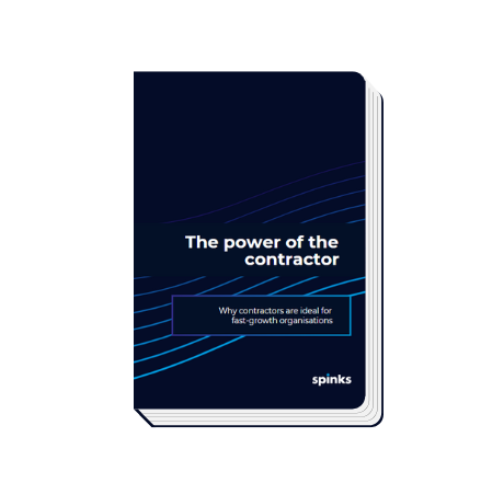
IR35.
What is IR35?
IR35 isn’t new. It was introduced by the UK government in 2000 to address concerns that workers who were providing their services through intermediaries (such as limited companies) were, in some instances, ‘disguised employees’ and were therefore avoiding paying employee income tax and national insurance contributions.
With the introduction of IR35 these individuals are now classed in one of two ways. Where they are ‘inside’ IR35, PAYE deductions must be made from the entire contract income as if they are an employee.
Where they are ‘outside' IR35 their work is classed as a genuine service, in business on its own account, and not subject to the same tax treatment as employees.
Why are people talking about it now?
Up until 2017 the legal responsibility for defining whether a placement is inside or outside IR35 was with the worker themselves.
In April 2017 that responsibility switched to the client. This was limited to the public sector, but it is probable that this will extend to the majority of the private sector from April 2020.
What is the risk and responsibility for companies?
In a nutshell, companies will need to assess their workforce and determine whether each role is inside or outside IR35. The legislation states that all companies must take ‘reasonable care’ when assessing, simply classifying every role the same way will not work. You can visit the government’s IR35 web page here, and see its assessment tool (CEST) here.
If a non-compliant procedure is followed the financial penalties can be significant. Just as importantly, your non-pay rolled workforce may also be concerned by this change, and ensuring you engage with this important group will be key to ensuring you retain your supply of talent.
The good news is there is still time, and support available to help. And, in our view, this change is not as ‘cataclysmic’ as some might suggest.
What can you do right now?
Right now, the government is still finalising the detail of the legislation, but it is critical to begin to plan now. This is what we’d recommend:
1. Conduct an Audit
Understand who your contingent workers are, how are they engaged, what the contracts look like, how they are paid and what the associated risks are
2. Engage Stakeholders
Engage with your contractors, managers and agencies to tell them what you are doing and how you can work together.
3. Assign Responsibility
Build a steering team with responsibility and accountability to oversee the change programme and gain sponsorship.
How can Spinks help?
We are conducting Discovery Meetings with all our clients . We want to help them, and the contractors working for them, plan for this important change. This is entirely free of charge, and typically would include:
- Explaining the legislation in more detail
- Helping shape a response plan
- Providing our opinion based on our previous experience, especially in the public sector
Spinks also have a wide number of services that can support your needs, ranging from Contractor Audits, to Statement of Work to Outsourcing. We do however believe for most organisations, relatively simple, well thought through changes will bring them in line with legislation.
What is Spinks' experience?
There are few organisations who know this space better than Spinks does. As part of Nash Squared, we have managed tens of thousands of contractors and service providers in a highly compliant way for over three decades, working in some of the most rigorous and regulated sectors.
During 2017 we helped many of our major public sector clients, and thousands of contractors, deal with the IR35 changes. We also have a wide range of experience working in other countries that have implemented very similar legislation (for example the 2016 DBA Act in the Netherlands).
In addition, we run webinars, conduct research and write articles on this topic. Our insights and opinions have been quoted in the Financial Times, Computer Weekly as well as contractor press.
For more information around contracts or IR35, contact our resident expert Rob Pestridge here.
